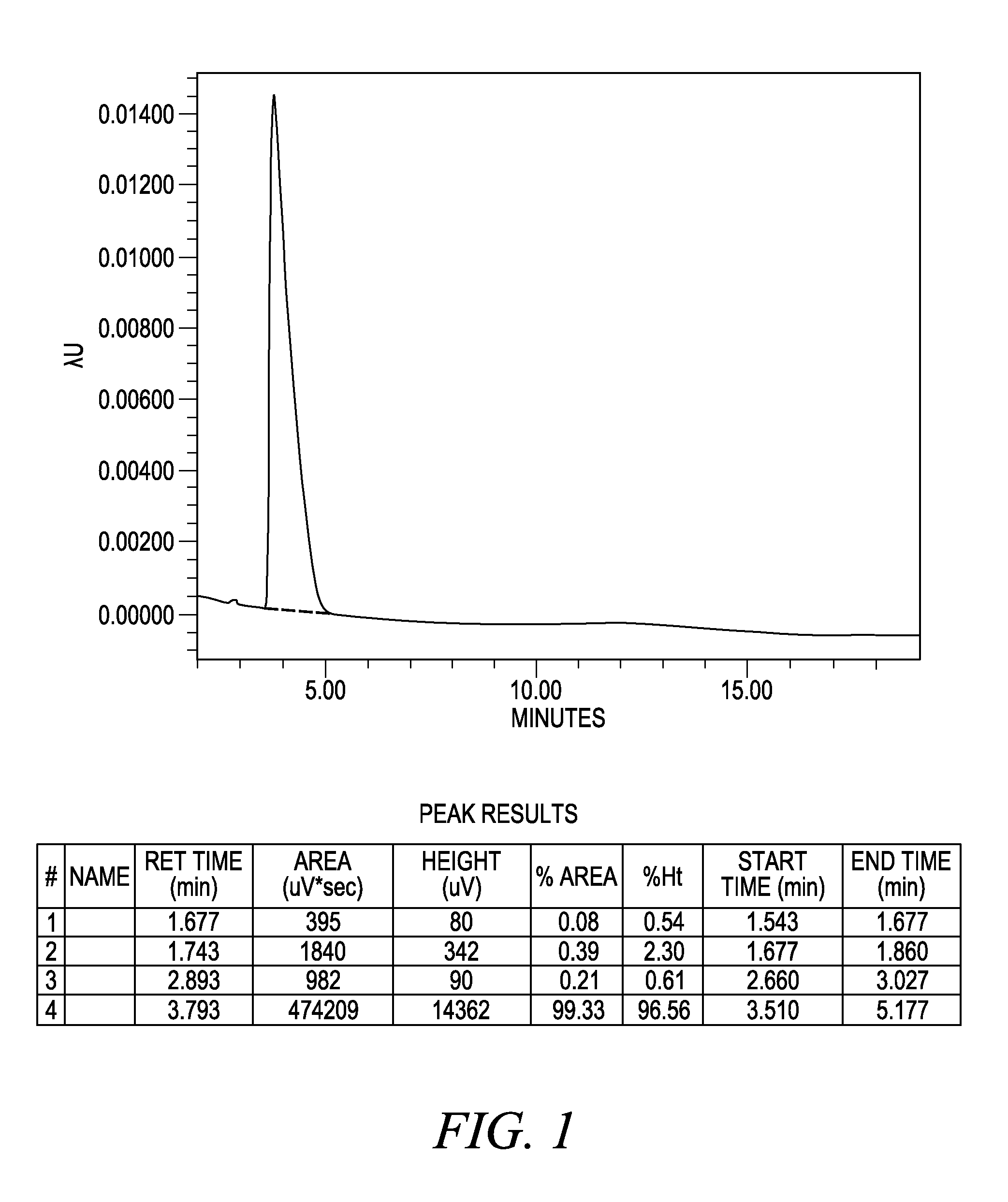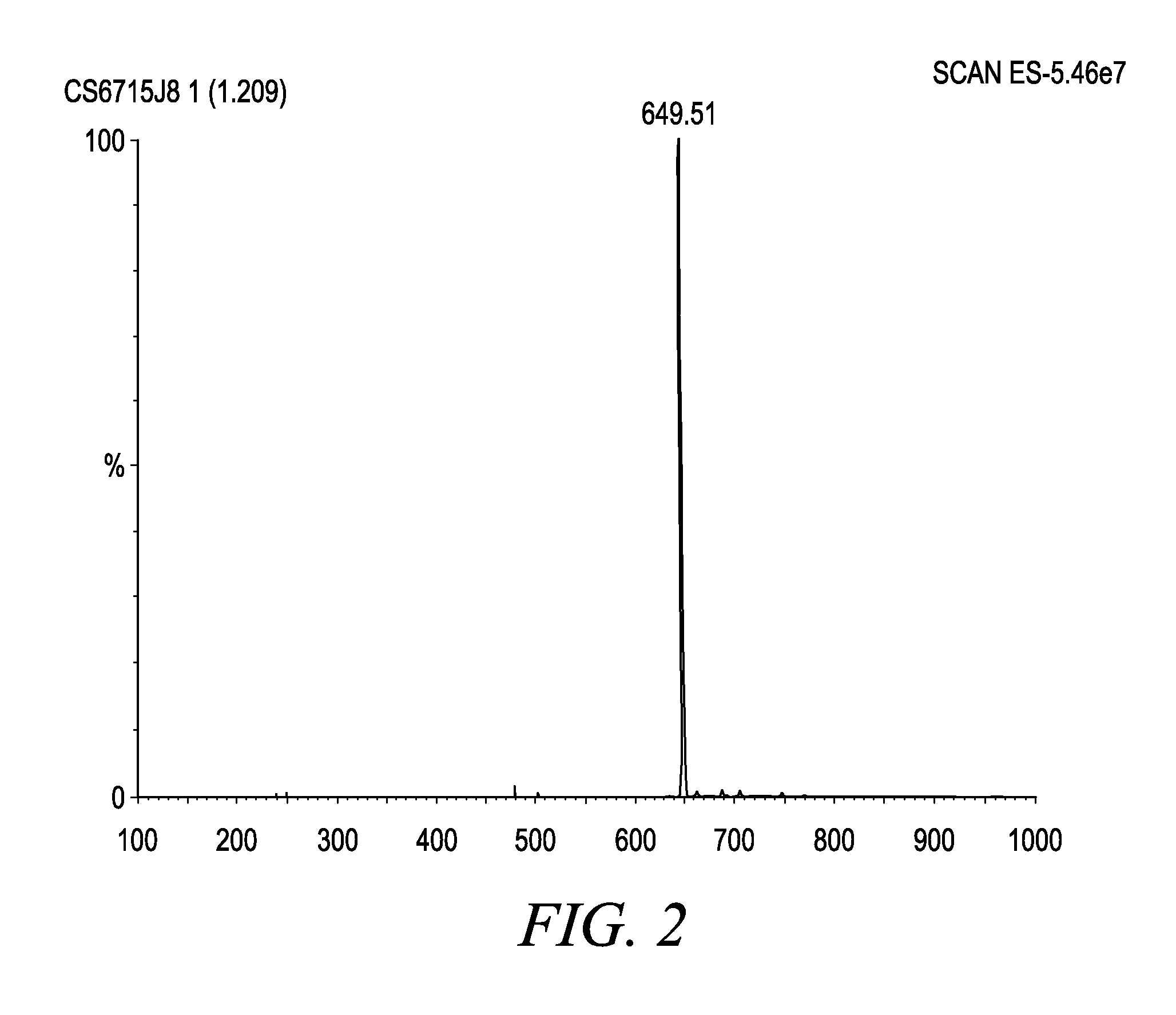use of rhamnolipids as a drug of choice in the case of nuclear disasters in the treatment of the combination radiation injuries and illnesses in humans and animals
a technology of rhamnolipids and nuclear disasters, applied in the field of rhamnolipids as a drug of choice in the case of nuclear disasters in the treatment of combination radiation injuries and illnesses in humans and animals, can solve the problems of lack of specific drugs, no effective drugs for their treatment, no direct or indirect proof of the effectiveness of rhamnolipids
- Summary
- Abstract
- Description
- Claims
- Application Information
AI Technical Summary
Benefits of technology
Problems solved by technology
Method used
Image
Examples
example 1
The Production of Rhamnolipid BAC-3 from Strain Ps. Aeruginosa Sp
[0101]After fermentation, biomass was separated by Beckman ultracentrifuge at a speed of 60,000 g, and room temperature. After biomass was removed, the original volume, which contained rhamnolipids was filtrated through 0.1 μm filter to remove the rest of bacteria and cells' debris. After that the same volume was ultrafiltrated through 106 molecular filter, following through 105 and 104 molecular filter (Pellicon cassettes) using Millipore system with continuous flow (Millipore, Billerica, Mass., USA). After last filtration all supernatant was collected, re-suspended in the same quantity of Millique filtered water and the procedure was repeated 4 times. In this way the color of the fermented broth was removed and the rest of colorless or slightly colored rhamnolipids were collected in supernatant. Supernatants with rhamnolipids were removed and diluted in distillated water up to the original volume. Prepared solution c...
example 2
FAB Spectrometry
[0103]FAB spectrums (Eng: Fast Atomic Bombardment) of BAC-3 were collected by the help of LSIMS / CID methods (Liquid Secondary Ion Mass Spectrometry / Collision Induced Dissociation) on VG70SEQ hybrid mass spectrometer) Micro Mass, Manchester, UK) s EBQQ configuration which was equipped with source of Cesium ions. On figure (FIG. 3) was shown one part of FAB spectrometry and on figure (FIG. 4) was shown structure formula of: α-L-rhamnopyranosyl-(1,2)-α-L-ramnopyranosyl)-3-hidroksidecanoyl-3-hidroksidecanoic acid.
example 3
Leukotriene C4 Synthase
[0104]Leukotriene C4 (LTC4) synthase is crucial in the formation of LTC4 from LTA4. Taken together with other assays for enzymes involved in the lipoxygenase pathway (e.g. 5-lipoxygenase, LTA4 hydrolase), a locus of action can be established, mechanism of agents' activities which inhibit the formation of the leukotrienes.
[0105]Guinea pig lung LTC4 synthase was used. Test compound and / or vehicle was preincubated with 180 μg / ml enzyme dissolved in phosphate buffer pH 7.8 for 15 minutes at 37° C. The reaction was initiated by addition of 2.5 μg / ml LTA4 methyl ester for another 30 minute incubation period and terminated by further addition of ice-cold methanol. Determination of the amount of LTC4 formed was read spectrophotometrically by enzyme immunoassay kit (EIA). Compounds was tested at the concentrations of 1,000; 100; 10; and 1 μM / ml. The used solvent was DMSO. At the highest concentration, the inhibition of leukotriene C4 synthase with rhamnolipid BAC-3 was...
PUM
| Property | Measurement | Unit |
|---|---|---|
| volume | aaaaa | aaaaa |
| pH | aaaaa | aaaaa |
| concentration | aaaaa | aaaaa |
Abstract
Description
Claims
Application Information
 Login to View More
Login to View More - R&D
- Intellectual Property
- Life Sciences
- Materials
- Tech Scout
- Unparalleled Data Quality
- Higher Quality Content
- 60% Fewer Hallucinations
Browse by: Latest US Patents, China's latest patents, Technical Efficacy Thesaurus, Application Domain, Technology Topic, Popular Technical Reports.
© 2025 PatSnap. All rights reserved.Legal|Privacy policy|Modern Slavery Act Transparency Statement|Sitemap|About US| Contact US: help@patsnap.com



